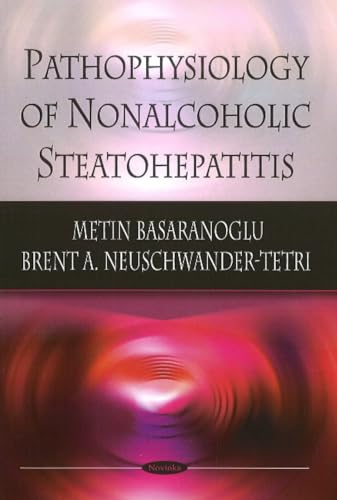Verwandte Artikel zu Pathophysiology of Nonalcoholic Steatohepatitis

Zu dieser ISBN ist aktuell kein Angebot verfügbar.
Alle Exemplare der Ausgabe mit dieser ISBN anzeigen:Book by Metin Basaranoglu
Die Inhaltsangabe kann sich auf eine andere Ausgabe dieses Titels beziehen.
Reseña del editor:
Rapid advances on molecular studies, manipulation of the mouse genome, the development of a number of animal models, and using these in studies of nonalcoholic fatty liver disease (NAFLD) have provided important insights into the pathogenesis of this relatively common disorder. One of the most crucial advances was to recognise the links among obesity, insulin resistance, inflammation and NAFLD. A growing body of literature has shown that insulin resistance and its liver-related consequence, NAFLD, could be the result of generalised inflammation. Genetic and behavioral factors contribute to increased visceral adipose tissue where increased oxidative stress and lipid peroxidation may contribute to dysregulated production of adipocytokines, fatty acids, and bioactive lipids. This chain of these events may contribute to local and peripheral insulin resistance, a central underlying pathophysiological process that may both cause and result from increased peripheral lipolysis and elevated free fatty acid concentrations in the circulation. Abnormally elevated free fatty acids taken up by organs other than adipose tissue, such as liver and skeletal muscle, contributes to steatosis of these organs (ectopic lipogenesis). Increased muscle and hepatocellular lipid content provides substrates for oxidative stress and lipid peroxidation, and also promotes insulin resistance in both liver and muscle by disturbing their downstream insulin signaling cascades. Insulin resistance further increases peripheral lipolysis in adipose tissue, further elevates circulating free fatty acids, inhibits hepatic fatty acid a-oxidation and increases de novo synthesis of both fatty acids and triglycerides in the liver. Excessively produced triglycerides in the liver are either stored as fat droplets or secreted into the plasma as very-low-density lipoproteins. If this complex mechanism of hepatic fat synthesis and secretion capacity is overwhelmed, excessive triglycerides accumulate within the hepatocytes and manifests as NAFLD. A fatty liver is sensitive to hepatocellular injury and sustained injury can manifest as nonalcoholic steatohepatitis (NASH), NASH-associated cirrhosis, and NASH-associated hepatocellular carcinoma. Specific depletion of hepatic natural killer T cells with consequent proinflammatory cytokine polarisation of liver cytokine production might be one reason for this increased hepatic sensitivity against various stimuli. Only a minority of patients with NAFLD have the necroinflammatory changes of NASH. The development of NASH in patients with NAFLD may be the consequence of secondary abnormalities such as injured and dysfunctional mitochondria, generation of reactive oxygen species with down-regulation or consumption of antioxidants causing oxidative stress and lipid peroxidation, increased activity of cytochrome P450 2E1, disturbed production of adipocytokines, and the effects of gut-derived cytotoxic products. The dynamic interplay of these processes in the pathogenesis of NAFLD remains incompletely understood and is an area of active research.
„Über diesen Titel“ kann sich auf eine andere Ausgabe dieses Titels beziehen.
- VerlagNova Science Publishers Inc
- Erscheinungsdatum2009
- ISBN 10 1606924656
- ISBN 13 9781606924655
- EinbandTapa blanda
- Anzahl der Seiten112
(Keine Angebote verfügbar)
Buch Finden: Kaufgesuch aufgebenSie kennen Autor und Titel des Buches und finden es trotzdem nicht auf ZVAB? Dann geben Sie einen Suchauftrag auf und wir informieren Sie automatisch, sobald das Buch verfügbar ist!
Kaufgesuch aufgeben